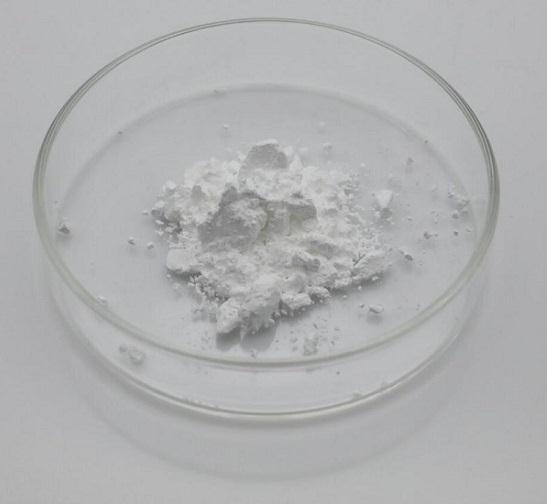Germanium Oxide Coated Carbon Nanotubes and Its Safety Concerns
General Description
Germanium oxide possesses unique properties that make it suitable for applications in nanoelectronics. Coating carbon nanotubes with nanometer-thick layers of germanium oxide, known as germanium oxide nanocables, provides exceptional insulation and enhances the stability and reliability of electronic devices. The preparation of these nanocables represents a novel approach in nanoelectronics, offering excellent insulation properties and potential for further advancements in nanoscale electronic components. However, it is important to note that germanium oxide has safety concerns and precautions should be taken to avoid exposure in the workplace.

Figure 1. Germanium oxide
Properties and Advantages
Germanium oxide possesses unique properties that make it an attractive material for applications in nanoelectronics. Various methods have been explored to prepare one-dimensional nanostructures based on germanium. For instance, Ge-filled SiO2 nanotubes, Ge/Co coaxial nanocables, and Si-Ge core-shell nanostructures have been successfully fabricated. However, the preparation of thin-layer germanium-oxide-covered carbon nanotubes, referred to as germanium oxide nanocables, has not yet been described in literature. In this study, we aim to fill this gap by detailing the process of coating carbon nanotubes with nanometer-thick layers of germanium oxide and demonstrating the exceptional insulation properties of this coating. The fabrication of germanium oxide nanocables holds great promise for nanoelectronic applications due to the combination of the unique properties of germanium oxide and the excellent conductivity of carbon nanotubes. The nanometer-thick layer of germanium oxide acts as a protective barrier, providing insulation and preventing electrical leakage. This coating enhances the stability and reliability of the nanocables, making them suitable for various electronic devices. In conclusion, the preparation of germanium oxide nanocables represents a novel approach in nanoelectronics, offering excellent insulation properties and potential for further advancements in nanoscale electronic components. 1
Applications in Coated Carbon Nanotubes
Germanium oxide is widely used in the preparation of coated carbon nanotubes for various applications in nanoelectronics. In a study, researchers developed an ultrathin coating of individual multi-wall carbon nanotubes using germanium oxide. The coated carbon nanotubes were prepared through the in situ gelation of tetramethoxy germanium, resulting in the formation of an amorphous germanium oxide layer. The germanium oxide/carbon nanotube nanocables were thoroughly characterized using techniques such as transmission electron microscopy (TEM), TEM/energy-dispersive x-ray spectroscopy, x-ray photoelectron spectroscopy (XPS), and current-voltage measurements. These analyses confirmed that the ∼10 nm thin germanium oxide layer exhibited excellent electrical insulating properties for the individual carbon nanotubes. The significance of this research lies in the development of highly efficient nanoelectronics and nanoelectrodes. The insulated nanocables provided by the germanium oxide coating offer improved performance and reliability in various nanoscale electronic devices. This breakthrough opens up new possibilities for the design and fabrication of advanced nanoelectronic components that require precise insulation of individual carbon nanotubes. Overall, the findings presented in this study pave the way for the advancement of nanoelectronics and related technologies. 1
Safety Concerns
Germanium oxide is a chemical compound that has been reported to have some safety concerns. It has been classified as a neurotoxin and a nephrotoxin, meaning it can be potentially harmful to the nervous system and kidneys. In occupational settings, it has been identified as a hepatotoxin, which means it can cause liver damage as a secondary toxic effect. However, the potential for toxic effects in humans is mainly based on cases of poisoning by ingestion or animal experiments. The oral LD50 (lethal dose required to kill 50% of a tested population) of germanium oxide in mice is approximately 1300 mg/kg. Effects of ingestion in humans include anorexia, nausea, somnolence, diarrhea, and acute pulmonary edema. Therefore, appropriate precautions should be taken to avoid exposure to germanium oxide in the workplace, such as using protective gear and following safe handling procedures. Overall, while germanium oxide does present some safety concerns, its potential toxicity can be effectively managed through proper handling and safety measures. 2
Reference
1. Pumera M, Iwai H, Miyahara Y. Germanium-oxide-coated carbon nanotubes. Nanotechnology. 2009;20(42):425606.
2. Germanium oxide. National Center for Biotechnology Information (2024). PubChem Compound Summary for CID 14796.
Related articles And Qustion
Lastest Price from Germanium oxide manufacturers

US $1.00/kg2025-04-21
- CAS:
- 1310-53-8
- Min. Order:
- 1kg
- Purity:
- 99%
- Supply Ability:
- 10 mt

US $6.00/kg2025-04-21
- CAS:
- 1310-53-8
- Min. Order:
- 1kg
- Purity:
- 99%
- Supply Ability:
- 2000KG/Month



